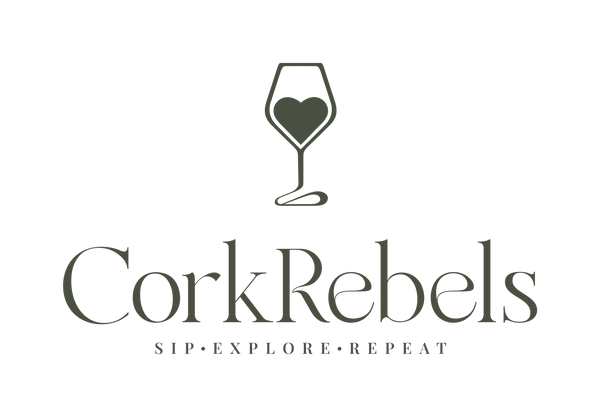Some revolutions begin on the streets, others in a rebellious wine cellar. German white wine is the perfect example of how enjoyment doesn't have to be tied to convention. Whether it's fresh Riesling from the Rheingau, creamy Pinot Gris, or delicately spicy Silvaner from Rheinhessen – white wine from Germany has something to offer for every taste. And the best part: The diversity of grape varieties and aromas creates a true explosion of flavor in the glass. Immerse yourself in the exciting world of German white wines and find out which grape varieties and growing regions make your heart beat faster.
The most important grape varieties among German white wines
The white wine vineyard area in Germany is vast and offers a wide range of wine styles. Here are the stars that no wine cellar should be without:
- Riesling : The rock star among German white wines! Crisp acidity, mineral freshness, and fruity aromas of green apples, citrus fruits, and peaches. Particularly popular from the Mosel, Rheingau, and Palatinate wine-growing regions.
- Pinot Gris : Creamy, nutty, and full of structure. Perfect for those seeking a rich white wine with notes of pear, almond, and honey. It is multifaceted, from a light summer wine to a powerful food pairing.
- Weißburgunder : The elegant all-rounder among German white wines. Fresh, delicate acidity paired with subtle aromas of apple, quince, and blossoms. A wine that excels both on its own and in combination with fine cuisine.
- Silvaner : A true insider tip! Especially from Rheinhessen, it demonstrates its class with notes of gooseberry, hay, and a gentle minerality. Its earthy elegance makes it the perfect accompaniment to regional specialties.
- Müller-Thurgau : An uncomplicated wine with delicate aromas of nutmeg, apple, and citrus. Light and refreshing, ideal for balmy summer evenings or as an uncomplicated everyday wine.
- Chardonnay : Increasingly popular in Germany! A powerful wine with exotic fruit aromas, light vanilla, and a melting texture. What's particularly exciting is that German winemakers are increasingly experimenting with aging in oak barrels, which gives Chardonnay additional depth.
Viticulture in Germany: The rebellious growing regions
The German wine-growing regions are home to magnificent white wine. You should know these regions:
- Rheingau : The cradle of Riesling! Mineral wines with lively acidity and great aging potential. The steep vineyards along the Rhine ensure exceptional qualities.
- Rheinhessen : The rebellious region for white wine varieties such as Silvaner, Pinot Gris, and Chardonnay. Pure diversity! The winemakers in this region are known for their innovative spirit and enjoy experimenting with modern techniques.
- Palatinate : Sun-drenched with a magnificent range of white wines. Fruit-forward Riesling, creamy Pinot Blanc, and characterful Chardonnay. Wines of power and expressiveness are produced here.
- Franconia : The home of Silvaner. Exciting wines with a clear structure and earthy aromas. The typical Bocksbeutel bottles are unmistakable and symbolize a rich wine culture.
- Mosel : World-famous for Riesling with delicate acidity and intense fruit. The often steep slopes produce particularly expressive wines that are appreciated worldwide.
Why you shouldn't underestimate German white wine
Germany's winemakers have it all! The cooler climate produces elegant, fresh, and complex white wines. But what makes them so unique?
- Perfect balance : The combination of freshness, fruit, and acidity creates harmonious wines with a vibrant structure. Every sip tells a unique story of terroir and craftsmanship.
- Variety of flavors : From crisp and fruity to creamy and nutty, German white wine offers an explosion of flavor in the glass. No other white wine is as versatile as the one from Germany.
- Top quality : Strict wine regulations guarantee that every bottle is produced with dedication and craftsmanship. Sustainable cultivation and natural methods are becoming increasingly important.
How to enjoy German white wine perfectly
Good wine deserves proper care. To help your white wine reach its full potential, here are a few tips:
White wine develops its full aroma best at a temperature between 8 and 12 degrees Celsius . If it's too cold, the delicate aromas are lost, while if it's too hot, it becomes heavy and unrefreshing. A wine cooler can help maintain the optimal drinking temperature. The right glass is equally important: tulip-shaped glasses concentrate the aromas and allow them to develop optimally. A narrow bowl particularly highlights the freshness of the wine, while wider glasses emphasize the more complex notes and give the wine more room to develop.
Food pairings with German white wines
Riesling loves Asian cuisine and goes particularly well with spicy dishes, as its fresh acidity elegantly balances the spiciness. Pinot Gris, on the other hand, goes perfectly with pasta with cream sauces or fish , as its creamy texture and delicate fruitiness complement the flavors wonderfully. Silvaner is an ideal accompaniment to asparagus and light vegetable dishes , as its fine minerality and freshness enhance the delicate flavors. Chardonnay particularly reveals its strengths in combination with shellfish and creamy cheeses , as its complexity and elegance perfectly rounds off these dishes. Finally, Müller-Thurgau goes excellently with fresh salads and light summer dishes , as its uncomplicated, fruity nature ensures a refreshing harmony.
Your wine rebellion begins now!
As you can see, German white wine is anything but boring . The variety of grape varieties, flavors, and growing regions offers the perfect wine for every occasion.
So, stop by CorkRebels and find the perfect wine for you in our selection —whether it's white , red, or rosé . Of course, we carry German wines as well as wines from other countries around the world. And if you'd like to learn more about the world's different wine regions and grape varieties, check out our blog . We look forward to your visit! Cheers!

